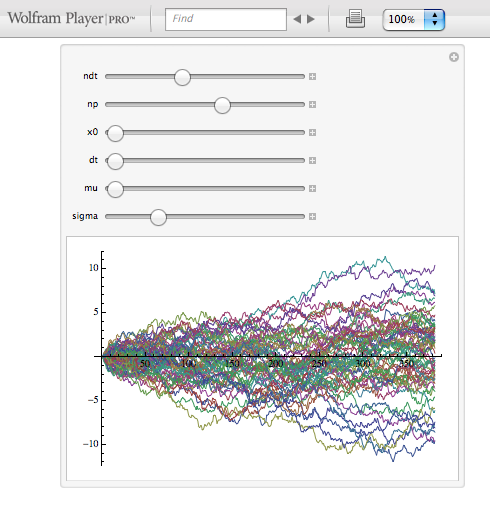

If we look at this situation from above, so that we cannot see the supporters, we see the large balloon as a small object animated by erratic movement. This type of imbalance exists at all times, and it causes random motion. In this case, the forces exerted from the left side and the right side are imbalanced in favor of the left side the balloon will move slightly to the left. We might have 20 supporters pushing right, and 21 other supporters pushing left, where each supporter is exerting equivalent amounts of force. Consider now the force exerted at a certain time. In the end, the balloon is pushed in random directions, so it should not move on average. Because they are excited, these fans hit the balloon at different times and in different directions with the motions being completely random. The balloon is so large that it lies on top of many members of the crowd. Imagine this large balloon in a football stadium or any widely crowded area. However, it was Albert Einstein's (in his 1905 paper) and Marian Smoluchowski's (1906) independent research of the problem that brought the solution to the attention of physicists, and presented it as a way to indirectly confirm the existence of atoms and molecules.Ĭonsider a large balloon of 10 meters in diameter. This was followed independently by Louis Bachelier in 1900 in his PhD thesis "The theory of speculation", in which he presented a stochastic analysis of the stock and option markets.

Thiele in 1880 in a paper on the method of least squares. The first person to describe the mathematics behind Brownian motion was Thorvald N. By repeating the experiment with particles of dust, he was able to rule out that the motion was due to pollen particles being 'alive', although the origin of the motion was yet to be explained. He then observed minute particles within the vacuoles of the pollen grains executing a jittery motion. It is believed that Brown was studying pollen particles floating in water under the microscope. Nevertheless Brownian motion is traditionally regarded as discovered by the botanist Robert Brown in 1827. Jan Ingenhousz had described the irregular motion of coal dust particles on the surface of alcohol in 1785.

So the movement mounts up from the atoms and gradually emerges to the level of our senses, so that those bodies are in motion that we see in sunbeams, moved by blows that remain invisible." Although the mingling motion of dust particles is caused largely by air currents, the glittering, tumbling motion of small dust particles is indeed caused chiefly by true Brownian dynamics. Then those small compound bodies that are least removed from the impetus of the atoms are set in motion by the impact of their invisible blows and in turn cannon against slightly larger bodies. It originates with the atoms which move of themselves. their dancing is an actual indication of underlying movements of matter that are hidden from our sight. You will see a multitude of tiny particles mingling in a multitude of ways. He uses this as a proof of the existence of atoms: "Observe what happens when sunbeams are admitted into a building and shed light on its shadowy places. 60 BC) has a remarkable description of Brownian motion of dust particles. The Roman Lucretius's scientific poem On the Nature of Things (c. Successive positions every 30 seconds are joined by straight line segments (the mesh size is 3.2µm). Le Gall's book is a great reference for this and other topics related to Brownian motion after one has a suitable background in probability theory.Reproduced from the book of Perrin, Les Atomes, three tracings of the motion of colloidal particles of radius 0.53µm, as seen under the microscope, are displayed. So this means we have to look for another way to interpret what $\int_0^tX_s\,dB_s$ should mean, and the way it is treated in Le Gall's book Brownian Motion, Martingales, and Stochastic Calculus,įor instance, is to proceed by building up the theory of martingales and stochastic integration enough so that we can define expressions of the form $\int_0^t X_s\,dB_s$ as stochastic processes known as stochastic integrals, which are very roughly speaking some kind of martingale-like object. When $\alpha$ does not have bounded variation, then there are continuous functions $f$ that are not Riemann-Stieltjes integrable with respect to $\alpha$. In the Riemann-Stieltjes approach to integration, we can define integrals of the form $\int_0^t f(s)\,d\alpha(s)$ when $\alpha$ is, say, a function of bounded variation on $$, and $f$ is a continuous function on $$. As a process, the sample paths of the usual Brownian motion $(B_t)_$ is a suitable random process. One way to rigorously formulate what you are talking about is as follows.


 0 kommentar(er)
0 kommentar(er)
